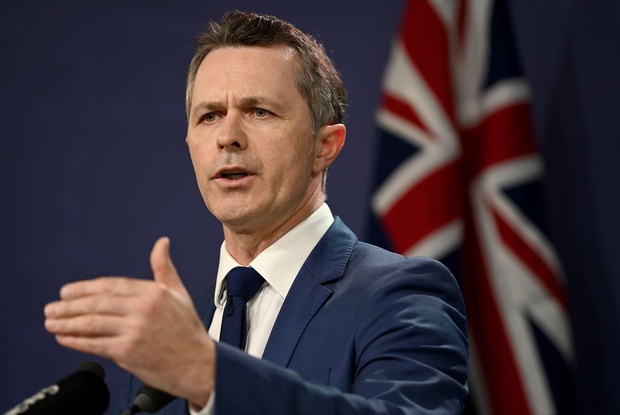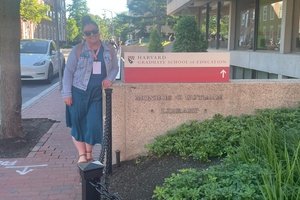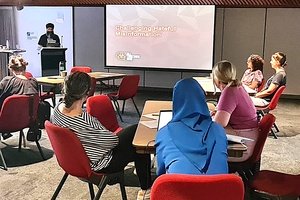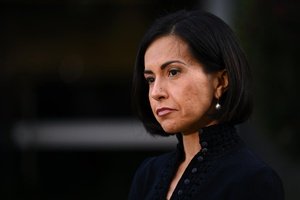Speaking on ABCTV show Insiders, Education Minister Jason Clare told host David Speers that only slightly more than half of students who enter an education degree finish their studies, and a clear hurdle appears to be keeping their heads above water financially during their studies.
“In teaching ... only about 54 per cent of teaching students who start a degree finish it,” he said.
“The average [completion rate] across universities is 70 per cent.
“We’ve got a teacher shortage crisis in this country. If we can increase the proportion of teaching students who finish their degree, we would go part of the way to tackling that crisis.”
At the Education Ministers Meeting on Friday, ministers received a progress update on key initiatives under the National Teacher Workforce Action Plan (NTWAP), including Commonwealth Teaching Scholarships, the Workload Reduction Fund and the response to the 'Be That Teacher' campaign.
The Federal Government said it had received 3183 Commonwealth Teaching Scholarship applications, which are currently being assessed.
Conditional offers will be made in late March and offers are expected to be finalised in April.
The Government said it is also working productively with all states and territories to finalise pilot proposals for Phase 2 of the Workload Reduction Fund.
Ministers were briefed on the Be That Teacher campaign and, as of Friday, more than 640,000 visits had been made to the campaign website. The campaign videos have been viewed more than 50 million times.
The Federal Government has invested $2.7 million over two years from 2022–23 to deliver the 400-page Australian Universities Accord through a 12-month review of Australia’s higher education system, led by a panel of eminent Australians.
The aim of the Accord, the Government says, is to ‘drive lasting and transformative reform in Australia’s higher education system’.
The final report on the Accord said one barrier to course completion is the high cost of living young people face whilst studying.
Increasing financial supports for these students, expanding access to youth allowance and potentially making a form of payment available for those who have to do practical placements in schools and hospitals are possible considerations.
Clare said paid practicums is a proposal the Government is considering actioning.
“If you’re a teaching student, about 600 hours through the course of your degree in the classroom where you’re not paid,” he told Speers.
“Often, you’ve got to move to do the paid prac, often you’ve got to give up your part-time job.

Friday’s Education Ministers Meeting in Melbourne provided a forum for collaboration and decision-making on education across Australia, including early childhood education and care.
Clare said he’s spoken to teaching students and nursing students who have told him that they can’t afford to do that.
“They’ve done the theory but they can’t afford to do the prac, so they drop out or they end up sleeping in a car because they can’t afford to pay the rent or to pay the bills,” he said.
“So, recommending there that governments invest in paid prac for teaching students and for nursing students and work with industry on providing more support for work integrated learning in other areas.”
Clare was asked about which recommendations he and the Government consider important and open to adopting from the Accord.
“I’ve made it pretty clear that my priority is helping more kids from the outer suburbs and the regions, more kids from poor families, get a crack at university,” he told Speers.
“At the moment about one in two kids in their 20s and 30s have got a university degree, but not in my neck of the woods (western Sydney), not where I grew up, and not in the regions.”
He said the report suggests that the number of people with either a TAFE qualification or a uni degree needs to be boosted by 80 per cent by the middle of the century.
“And that’s no easy task,” Clare added.
"And what the report says is ... if we’re going to do this, then you need to break that artificial barrier between TAFE and uni, make it easier for people to move between the two.
“And we’ve got to get rid of that invisible barrier that stops a lot of young people from poor families from the regions and from the outer suburbs of our big cities from getting a crack at uni in the first place.”
The Accord says that in the years ahead, we will need 80% of the workforce to not just finish high school, we will need them to finish TAFE or university as well.
— Jason Clare MP (@JasonClareMP) February 24, 2024
Clare was keen to emphasise that reform is required not only in higher education but also in school and early education, because in order to hit the 80 per cent target of increased participation in TAFE and university, reforms are required well before tertiary entry.
“Over the last five or six years we’ve seen a decline in the number of people finishing high school, particularly at public schools, and particularly young people from poorer backgrounds,” Clare said.
“They’re the same kids that are more likely to fall behind at primary school. They’re the same kids that are less likely to go to early education.
“This is all connected and so we need reform in early education, in school education, and in higher education, if we’re going to hit these targets and build a better and a fairer education system.”
Professor Shamit Saggar, executive director of Curtin University’s National Centre for Student Equity in Higher Education (NCSEHE), said the Accord addresses many neglected issues and opportunities, particularly the equity track record of universities.
“Most significant in the recommendations is needs-based funding, which will pave the way for system-wide reform and transform the university experience for students from marginalised backgrounds.
“Getting suitable funding in place is a positive start and long overdue, but key is how well the funding is allocated and in strong, equity-oriented leadership and evidence-backed strategies for student equity.”
The AEU on Friday released a report on how the top private schools in the nation are spending much more than the bulk of public schools; including five private schools reportedly spending more on lavish facilities than 3000 public schools combined.
Clare said that most non-government schools are low fee-paying schools.
“There are a bunch where it costs a king’s ransom to go there and they look more like a place where a king would live, but most are low fee-paying schools,” he said.
“I’m not trying to break the Gonski model. I want to finish it. I want to make sure that we fund our public schools properly.
“And I want to make sure that we close that funding gap and close the education gap.”














